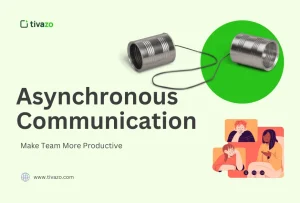Attitude is not behavior. It’s not performance either. It sits behind both, quietly shaping how people show up. Staff attitude reveals itself in how employees interpret tasks, respond to pressure, handle feedback, and interact with others. It’s invisible, but its effects are not.
A disengaged team drags productivity down. A negative culture spreads like mold. One bad customer interaction can destroy trust built over months.
You’ll get this in six parts:
- What is staff attitude?
- Types and examples
- Why it matters
- Warning signs
- Root causes
- How to fix it
What is the staff attitude?
Attitude is a psychological tendency expressed by evaluating work-related situations with a degree of favor or disfavor. It’s internal, shaped by beliefs and past experiences, but it leaks into behavior.
A positive staff attitude means showing up prepared, staying calm under pressure, and responding constructively to feedback. It includes hope, resilience, and a sense of shared responsibility.
Negative staff attitude shows as sarcasm, passive resistance, or constant excuse-making. It includes bitterness, avoidance, and mental checkout.
Attitude is not the same as behavior. Behavior is what people do. Attitude is the mindset behind it. Performance is the result. All three intersect, but attitude is the foundation.
Ajzen and Fishbein’s Theory of Planned Behavior links attitude directly to intention, which predicts actual behavior. Organizational behavior researchers use this to explain job satisfaction, turnover, and engagement levels.
Types of staff attitudes and examples
Positive:
- Enthusiasm—arrives early, volunteers for projects
- Accountability—owns mistakes, follows through on commitments
- Team spirit—supports others, shares credit
Negative:
- Apathy—minimal effort, low interest in outcomes
- Resistance—complains about changes, pushes back on feedback
- Entitlement—expects rewards without contribution

| Attitude type | Real-world example |
| Enthusiasm | Junior sales rep brings new leads proactively |
| Apathy | The senior developer criticizes every team change proposal |
| Resistance | The customer support agent follows up without reminders |
| Accountability | The manager expects praise for basic deliverables |
| Entitlement | The junior sales rep brings new leads proactively |
Why staff attitude matters
Attitude shows up in output. A positive attitude correlates with higher productivity, fewer errors, and faster turnaround. Gallup reports that engaged employees—often those with positive attitudes—are 21% more productive.
Teams suffer when attitude tanks. Negativity spreads. Collaboration collapses. Morale shrinks. Trust evaporates. One pessimistic team member slows everyone down.
Customer experience also takes a hit. A disengaged employee delivers robotic service. A bitter employee can sabotage the brand in one angry interaction.
Case in point: A 2023 Harvard Business Review study showed that companies with high levels of positive staff sentiment had 2x the customer satisfaction scores compared to those with neutral or negative internal cultures.
Attitude drives the tone, which drives perception, which drives loyalty.
Signs of poor staff attitude
- Constant complaints
- Passive aggression
- Rising absenteeism
- The sharp drop in productivity
- Frequent conflict with peers
- Low engagement survey results
- Poor reviews on Glassdoor
- Customer complaints rising
Checklist
☐ Do employees resist new tools or changes?
☐ Are managers spending time mediating drama?
☐ Is energy flat in meetings?
☐ Are top performers leaving quietly?
If yes, something’s rotting underneath.
Root causes of negative staff attitude
It rarely starts with the employee. It starts at the top.

- Poor leadership—unclear direction, inconsistent decisions
- No recognition—effort goes unnoticed
- Toxic culture—gossip, favoritism, cliques
- Burnout—unrealistic expectations, no rest
- Role confusion—unclear KPIs, conflicting tasks
Maslow’s hierarchy explains it simply—if people feel unsafe, disrespected, or under threat, attitudes will sink. Herzberg’s two-factor theory also draws a line between hygiene factors (pay, policies) and motivators (growth, recognition). Remove the first, and dissatisfaction sets in. Remove the second, and apathy follows.
How to improve staff attitude
No pep talks. No posters. Real fixes only.
- Train managers in emotional intelligence—people quit bosses, not jobs
- Recognition programs—public praise, peer shout-outs, real-time feedback
- Clear communication—no rumors, no guessing
- Career paths—visible, reachable, supported
- Mentorship—senior staff guiding junior ones
Zappos built their brand on this. They give employees control over customer interactions. They reward kindness. They screen for attitude during hiring. Turnover is low, morale is high, and service is legendary.
Attitude isn’t fixed. But it won’t shift without work.
Role of leadership in shaping staff attitude
Leaders set the tone. Every eye watches what they do, not what they say. A manager who cuts corners permits others to do the same. A team lead who handles stress calmly teaches others to breathe through chaos. It all starts from the top.
Clear expectations matter. Vagueness breeds confusion. Employees can’t align with values they don’t understand. State them. Model them. Repeat them.
Address attitude issues early. Not in the annual review. Not after it’s already infected the team. Small shifts in tone, body language, or collaboration habits can reveal deeper problems. Step in fast.
Psychological safety is the base layer. If people fear judgment, ridicule, or retaliation, they will shut down. No one brings ideas to a table full of landmines. Google’s Project Aristotle found that psychological safety was the strongest predictor of high-performing teams.
Leadership isn’t a title. It’s a climate. Build one worth walking into.
Measuring and monitoring staff attitude

You can’t fix what you don’t track. Guesswork won’t cut it.
Run anonymous surveys. Keep them short. Focus on clarity, not volume. Ask how people feel, not just what they do.
Use feedback forms after meetings or major decisions. Look for patterns, not outliers. Combine this with 1-on-1 check-ins that go beyond surface-level updates.
Monitor KPIs that reflect sentiment:
- Turnover rate—sudden spikes suggest disengagement
- Engagement scores—track over time, not once a year
- Absenteeism—rising numbers often hide attitude issues
- Peer feedback—ask who people enjoy working with and why
Data tells the truth leadership misses.
Conclusion
Attitude isn’t a perk. It’s a multiplier. Positive teams solve faster, serve better, and stay longer. Negative ones stall, isolate, and spread doubt.
The responsibility sits with leadership and HR. You shape the conditions. You build the trust. You hold the line.
Staff attitude is contagious. Make sure yours is worth catching.




